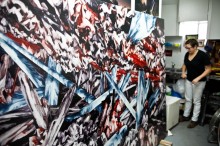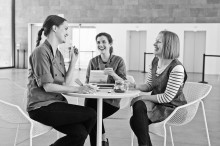
Fiona Ackerman
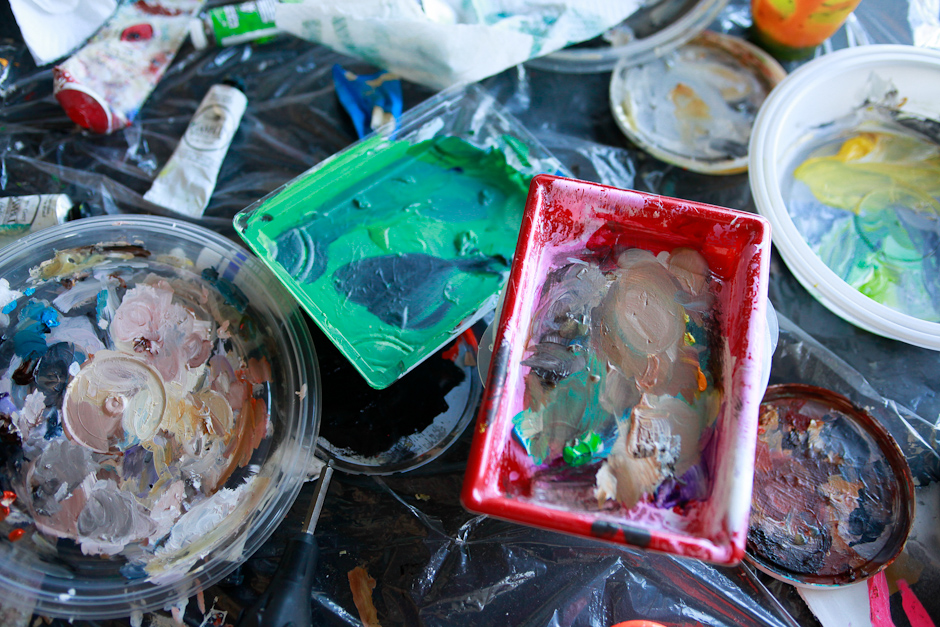
I can’t say I remember how we came across Fiona’s paintings, I just know that when we first saw them there was an immediate recognition of a shared interest— which is why we wanted to visit her in her Vancouver studio. Both IN THE MAKE and Fiona’s current work are examinations of artists’ spaces in which all details, great and small, all practices, references, and tools, are worth careful consideration. At IN THE MAKE we aim to offer an intimate look at the diverse ways art is made while simultaneously sharing how each individual artist’s aesthetic pervades their environment and reveals their perspective. However, I think for Fiona, her endeavor is ultimately less about accurately rendering other artists’ work environments and more about reinterpreting these spaces, imbuing them with her own preoccupations and sensibilities, to tell a more tangled story of space. As she so clearly has stated, “In my studio paintings, I’m reflecting a real place, a real studio. But at the same time, I’ve broken it down and built it back up into something new. On the canvas, we can see evidence of both the real studio space, and the space of imagination.” I’ve always loved real places mutated by the imagination— when fabrications, exaggerations, and omissions are allowed to coexist with plain and perceptible facts, I’m certain that somehow this is the closest I will ever get to something true and real.
Chatting with Fiona was interesting for us because though Klea and I visit artists’ in their studios for somewhat different reasons, it was nice to talk to someone else who has done their fair share of visiting studios and together we discussed the things that can happen in a studio visit, and the emerging patterns one can’t help but notice— such as: the full drawers or boxes that always contain beautiful (if slightly imperfect) work that artists have deemed “mistakes” but that they can’t bear to throw away and that I wish they would gift to me, or each person’s particular system of organization and their precise way of doing things even when they think they’ve done it different each time around— there are ways in which someone always holds their hands, or finds their tools, or sits in their space, and of course there are the bits of story about themselves they had no intention of telling you, but somehow they did.
Perhaps this is what I most enjoyed about our visit with Fiona— that with her we shared an intimate understanding of creative spaces, not just in the obvious ways, but that she too was privy to what it feels like to be in someone’s sacred space rife with their idiosyncrasies and messes and obsessions, and to know how personal, and how deeply affecting that experience can be.

How would you describe your subject matter or the content of your work?
Fitting with the ethos of IN THE MAKE, I’m working on a series of paintings based on visits to other artist’s’ studios. For these paintings, I’m looking at other people’s creative spaces and at their work within the context in which it was developed. What I find in their spaces, I bring back into my own studio, bringing their world into my own and reinterpreting the documentation into my own work.
I continue to make abstract work as well, but currently my focus is this body of work that looks at other people’s creative spaces, through my lens. However, the exhibition of these ‘studio’ paintings will be immediately followed by an exhibition new abstract work.
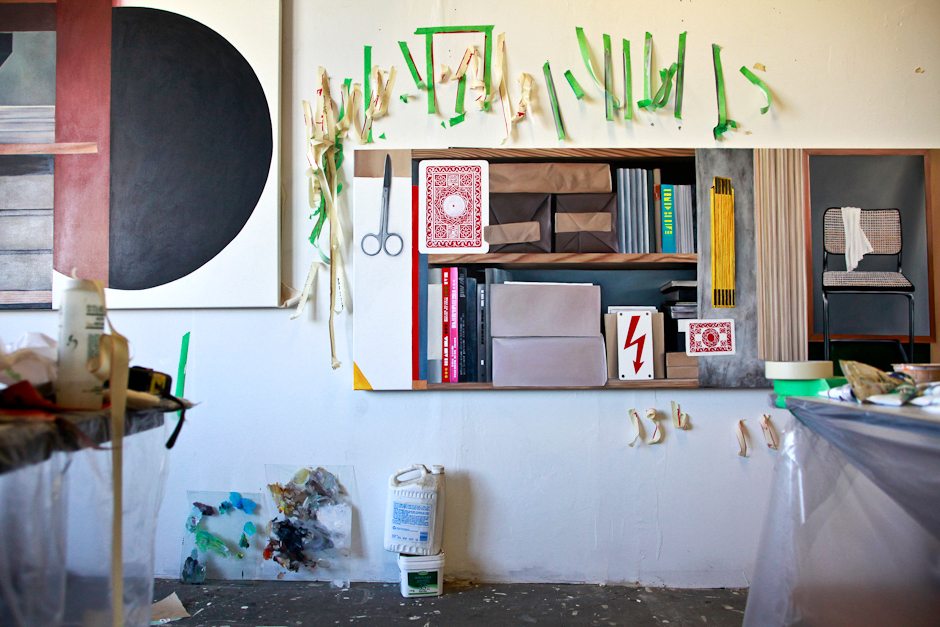
What mediums do you work with?
I work with acrylic, oil and spray paint on canvas and paper.
Your recent paintings are based on your studio and other artists’ spaces, where you take photographs of these spaces to reference while painting. How has that affected your relationship to your studio and sense of space, both personally and in relation to your art making process?
My first explorations in these studio inspired paintings were in my own studio. I was making deliberate arrangements and instillations using the art and objects in my studio. Unlike when I visit other artists’ spaces (and try to be respectful), my own studio is used more as a stage. In my own space I can manipulate and rearrange what I’ve chosen to be photographed, so I have much more control. However, there is very little that is unfamiliar anymore in my own studio. Rarely do I find something spontaneous -something that has not been staged for a painting composition. Perhaps it’s this lack of familiarity that makes other artists’ spaces so intriguing. Though all studios share common purposes, they are drastically different in the ways they expose the evidence of each artists’ creative process. However, I’m not sure that many artists look at their own spaces very hard. Even after all of the attention I’ve given it, my studio is still just an extension of my art materials – a very important one albeit.
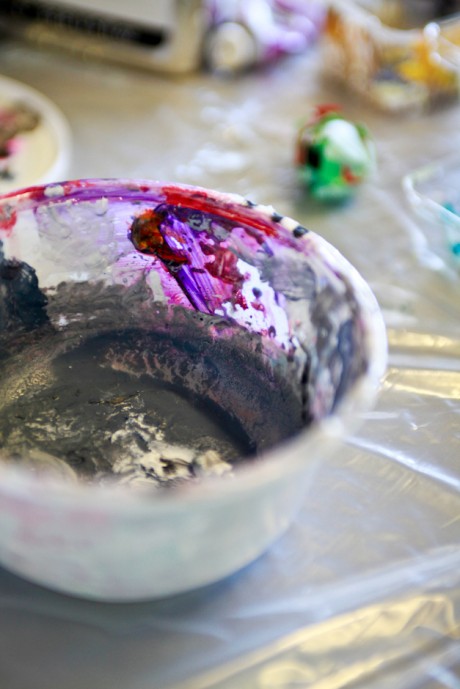
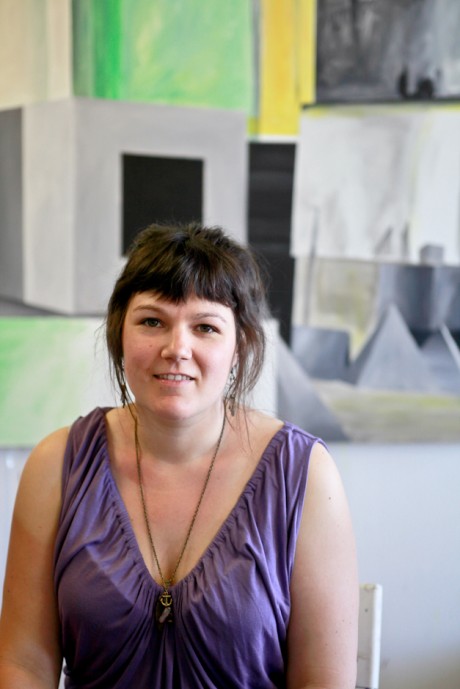

What are necessary elements you look for in a studio space and how do you foster creativity and productivity in a designated space?
What’s been really important for me is to have a space that is not used for anything but my painting practice. It’s not very productive or efficient to have to set up before working or put everything away after. I’ve been in the same space now for over 5 years. I’m at home there; I just walk in and easily pick up where I left off. Besides the obvious elements like decent light, fresh air, etc.…I generally prefer a studio that’s not too precious, one I don’t have to be too careful in or where I have to keep things too tidy.
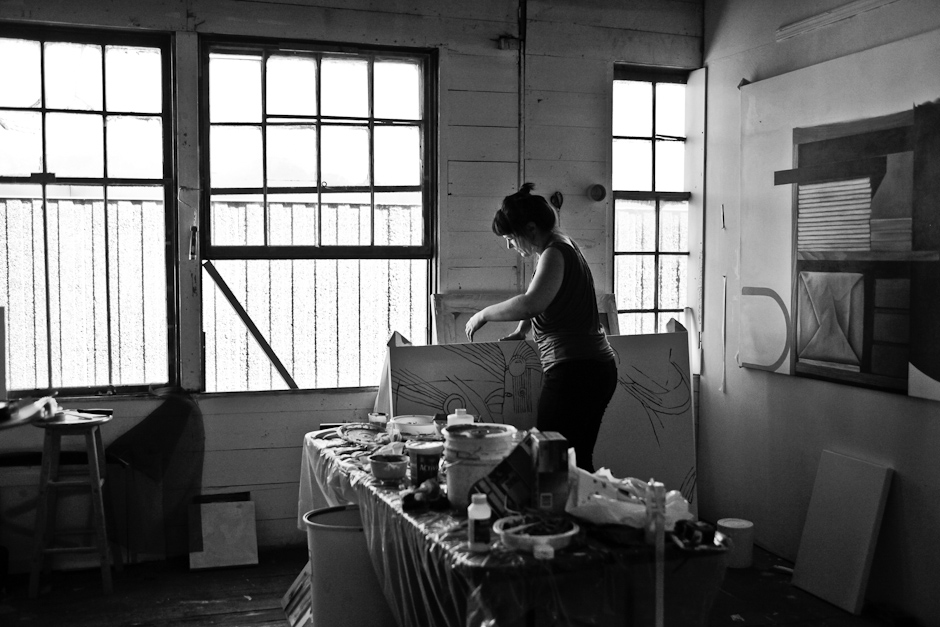
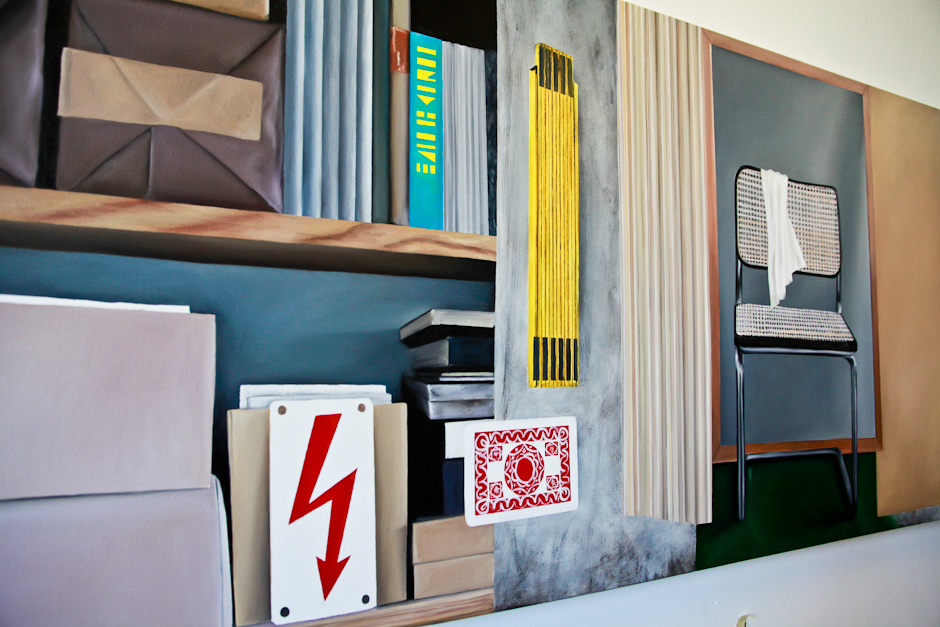
What influences outside the visual arts inspire and impact your approach to making work?
I’m not sure that my influences are obvious enough to me for me to name. I know there must be many, but where motivations come from in approaching new work is a bit of a mystery. Oddly it seems to work the other way around. I begin working on something in painting, and slowly find all kinds of other outside connections to it. Last year I became really interested in Michael Foucault, and his idea of ‘Heterotopic Space.’ The subject ended up being the conceptual basis for a whole body of work, but the theory came somewhat late in the actual production of the work.
Foucault wrote about what he called ‘heterotopias’, hetero meaning opposite or other, topia meaning place. For Foucault, there exists in every society places that both reflect reality, and completely invert it at the same time. Though his concept is quite layered, one of his simplest examples of a heterotopia is that of the garden. The garden has all the markings of a wild natural space (it truly is an organic natural environment), but at the same time it is artificial as it is organized with intention and manipulation. It reflects the real natural environment, but at the same time, turns it on its head.
In my studio paintings, I’m reflecting a real place, a real studio. But at the same time, I’ve broken it down and built it back up into something new. On the canvas, we can see evidence of both the real studio space, and the space of imagination. Functioning as a heterotopia itself, it reflects a real place, and turns it upside down.

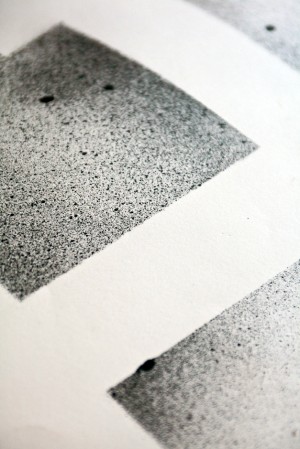
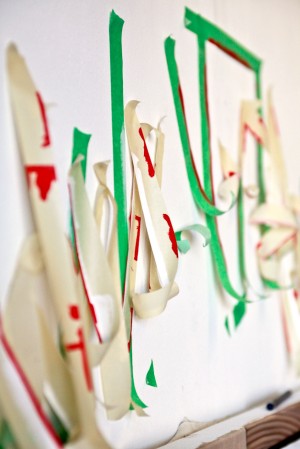
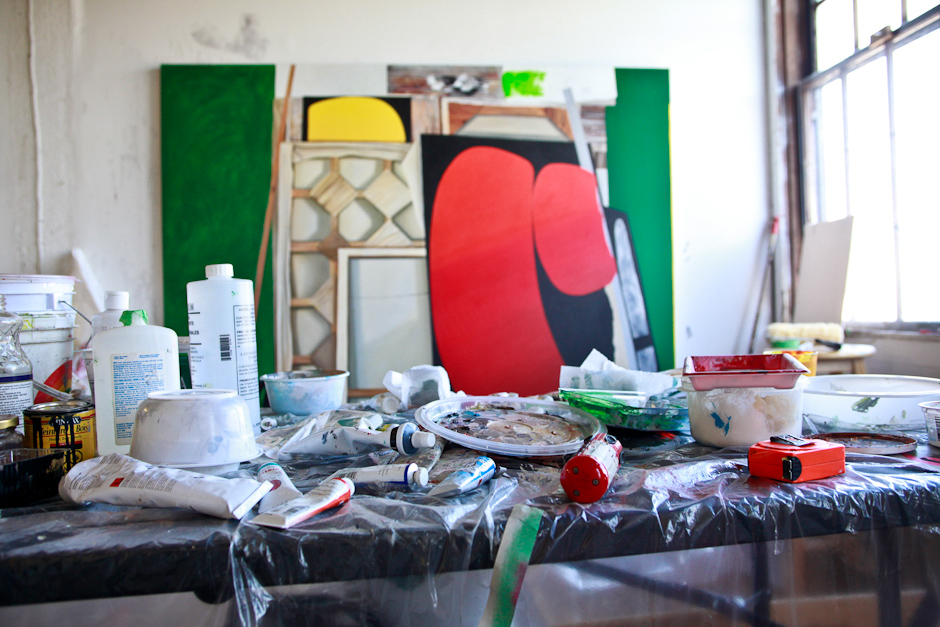
Is there something you are currently working on, or are excited about starting that you can tell us about?
Right now I’m working on a series of paintings inspired by a visit to German painter/printmaker Friedrich Meckseper. I visited his Berlin studio last fall. It was a significant experience meeting him, and I felt very privileged that he opened his studio to me to use as a subject. He’s an exceptional artist, who has lived his life with equal creativity – living many years in a now famous German artists colony, and even flying his hot air balloon over the Alps. Being in his personal space was really a window into his world, and I left with a much better understanding of where his work comes from. With the paintings I’ve been working on, I’ve tried to connect with his very personal creative environment, to both reference and react to it. I’m curious about what he will think of the paintings when they are finished. After all, I’m not holding a mirror to the studios, but a distorting lens.
It’s not uncommon for the artist to feel quite estranged from the paintings I’ve produced from visiting their studios. After all, once everything has gone through my hand and onto the canvas, it is much more a portrait of my world then theirs. The title of my upcoming exhibition, It’s Not You, It’s Me, gets right to this point (Winsor Gallery (Vancouver Feb 22, 2014).


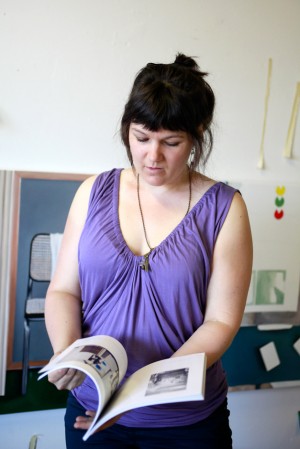
Do you see your work as relating to any current movement or direction in visual art or culture? Which other artists might your work be in conversation with?
Not specifically, but I’m reminded of when I was in Germany last year preparing an exhibition of my ‘studio paintings’ for a gallery in Münster. The Staatsgalerie Stuttgart opened a huge museum show about representations of “ the artists’ studio” in modern history. I’ve noticed more and more interest in the mythology of the artists’ studio- blockbuster shows in Stuttgart and IN THE MAKE being two examples. Perhaps as our lives become increasingly less private, we place more value on (and become more curious about) people’s personal environments; those last pieces of authentic private space, a physical window on the world of ideas. There is a desire to see behind the image, to know not only where art lives, but also how it was born.
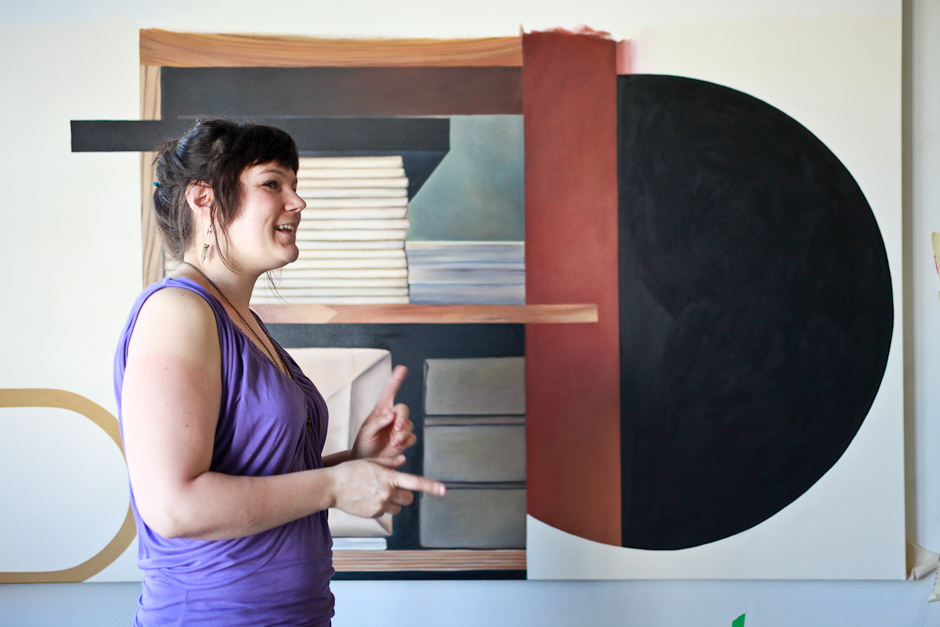

Words of wisdom?… a motto, favorite quote?
I’ve often quoted Woody Allen who said something like “80% of success is showing up.” I used to say it to urge myself to go to events that I would have gladly, or lazily skipped. But now I see it much more broadly. I’ve always showed up to the studio, that’s where my drive is. There are many kinds of artists, and as many kinds of careers. Find the place you will always, painlessly show up to, and make it your path.

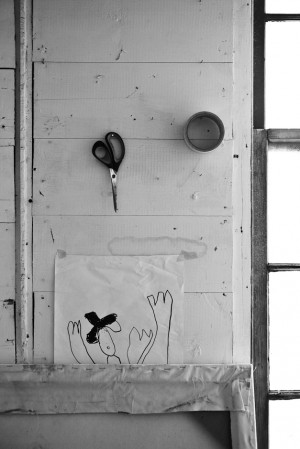
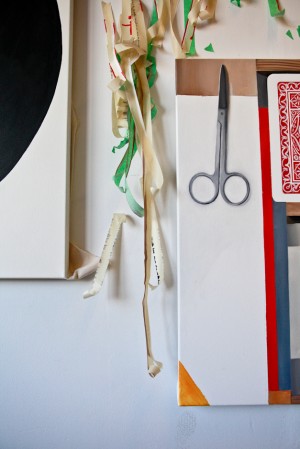
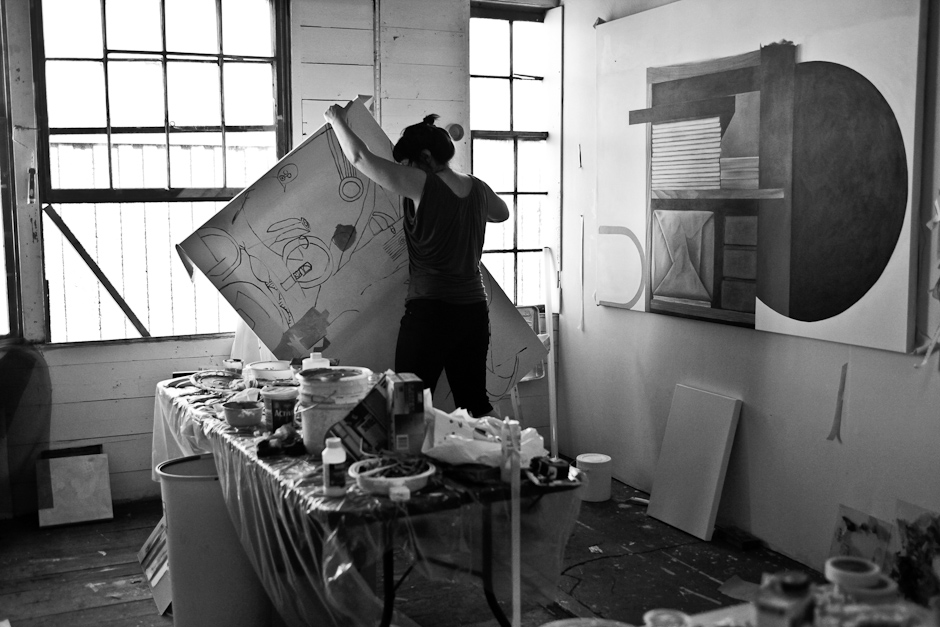
Are you involved in any upcoming shows or events? Where and when?
I currently have an exhibition running at White Brush Gallery in Düsseldorf Germany until Feb. 9, 2014.
At home in Vancouver, I’m about to open a solo exhibition titled It’s Not You, It’s Me at Winsor Gallery Feb 22 – April 12, 2012.
Sometimes literally as one door closes, another one opens, so on the closing date of the Vancouver exhibition, I’ll open a solo exhibition called Amplifier at Herringer Kiss Gallery in Calgary, April 12 – May 10, 2014.
I’m also really looking forward to seeing a copy of a new book I was asked to contribute to by Danielle Krysa (The Jealous Curator). Published by Chronicle Books, it’s called Creative Block, and has contributions from 50 artists about the creative process. It will be launched in Feb 2014.
To see more of Fiona’s work:
www.fionaackerman.com
www.winsorgallery.com
www.herringerkissgallery.com
www.steinroetter.de
www.whitebrushgallery.com




